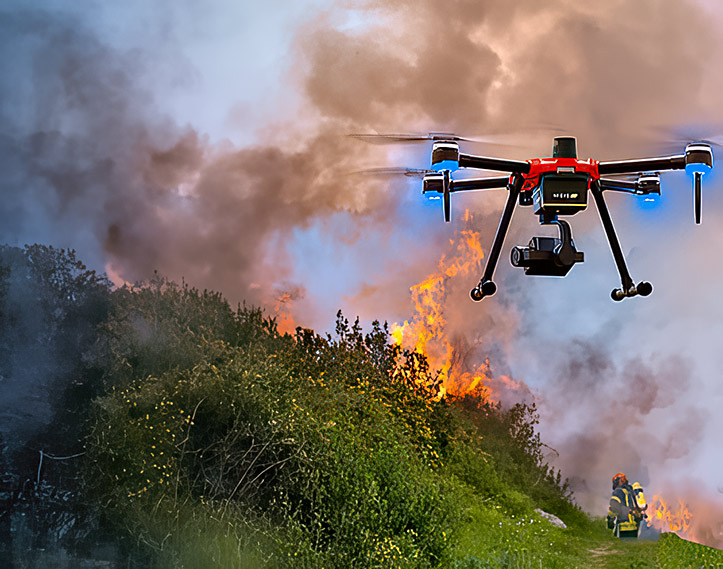
The FCC is proposing to open a specific segment of the 5 GHz spectrum to unmanned aerial vehicles (UAVs) or drones, aiming to enhance their usability in critical applications like emergency response and commercial services. This regulatory initiative seeks to designate the 5030-5091 MHz band exclusively for drones, improving communications during wildfires, disaster recovery, and for first responders.
Traditionally, most drones operate under general unlicensed and low-power wireless communications rules, predominantly in the 2.4GHz and 5GHz bands, which are also heavily utilized for consumer and professional Wi-Fi networks. This shared use can often lead to interference, particularly in densely populated areas, affecting operational reliability.
FCC Chairwoman Jessica Rosenworcel highlighted the urgent need for this regulatory update, saying, “It is past time that we assess the availability of wireless communications resources for the increasingly important remote-piloted aircraft activity we rely on today.” In the proceeding, the Chairwoman acknowledged the collaborative efforts of the National Telecommunications and Information Administration (NTIA) and the Federal Aviation Administration (FAA).
The Notice of Proposed Rulemaking (NPRM) released by the FCC outlines potential service rules for this new drone spectrum and invites public commentary on how to adjust regulations to ensure the seamless coexistence of drones with terrestrial mobile operations. It further proposes allowing drone operators to use the aeronautical VHF band for better coordination with air traffic control, which could significantly enhance safety in controlled airspace.
This push for a dedicated drone spectrum comes when commercial drone use rapidly expands. Recent approvals for companies like Amazon to conduct drone deliveries in specific U.S. cities underscore UAV technology’s growing economic and logistical potential. Google’Google’sdivision, Wing, has also reported substantial operational milestones, including over 100,000 flights, many of which involved commercial deliveries in countries like Australia, Finland, and the U.S.
By allocating a dedicated and protected segment of the 5GHz spectrum to drones, the FCC aims to reduce the likelihood of interference from other wireless devices, thereby bolstering the reliability of drone operations. This move is expected to clear the skies for more widespread and effective use of drones in various sectors.
The FCC’s proposal marks a significant step towards integrating UAVs more fully into the national airspace and communication networks, reflecting the growing importance of drones in public safety and the economy. The commission continues to seek feedback on this proposal, aiming to establish a comprehensive framework that will support the expanding use of drone technology in the coming years.

















